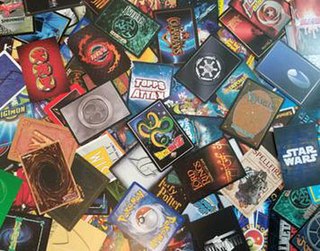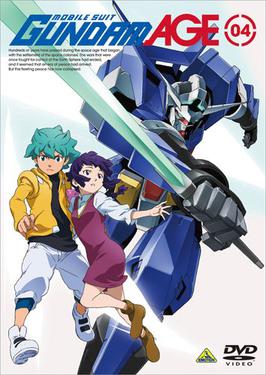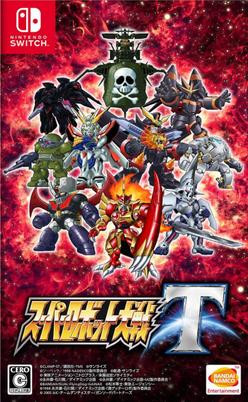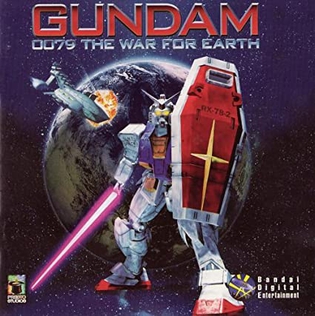
Mobile Suit Gundam SEED is an anime series developed by Sunrise and directed by Mitsuo Fukuda. The ninth installment in the Gundam franchise, Gundam SEED takes place in a future calendar era, in this case the Cosmic Era. In this era, mankind has developed into two subspecies: Naturals, who reside on Earth, and Coordinators, genetically enhanced humans capable of amazing feats of intellect who emigrate to man-made orbital colonies to escape persecution by natural humans. The story revolves around a young Coordinator Kira Yamato who becomes involved in the war between the two races after a third, neutral faction's space colony is invaded by the Coordinators.

Mobile Suit Gundam F91 is a 1991 anime film. It was Gundam creator Yoshiyuki Tomino's attempt to launch a new Gundam saga, set 30 years after Char's Counterattack. He re-teamed with character designer Yoshikazu Yasuhiko and mecha designer Kunio Okawara for the occasion.
The Zaku is a fictional line of manned robots (mecha) from Mobile Suit Gundam, part of the Universal Century fictional universe, where they are the Principality of Zeon's most commonly fielded Mobile Suits. The most widely known model is the MS-06 Zaku II series. It is redesigned by Kunio Okawara based upon the earlier draft by the series director Yoshiyuki Tomino, in which only the name was kept. The Zaku II has seen various redesigns and variants for hundreds of pieces of merchandise, and the Japanese post office has two stamps with Zaku IIs on them. The Zaku's aesthetic can be seen in more symbolic homages in the Gundam mythos, such as the GINN and ZAKU Warrior from Mobile Suit Gundam SEED, the Busshi from Mobile Fighter G Gundam, and the Jenice from After War Gundam X.

The Yu-Gi-Oh! Trading Card Game is a collectible card game developed and published by Konami. It is based on the fictional game of Duel Monsters created by manga artist Kazuki Takahashi, which appears in portions of the manga franchise Yu-Gi-Oh! and is the central plot device throughout its various anime adaptations and spinoff series.

Haro is the mechanical mascot of the Gundam science fiction anime franchise, and is the only character that appears in more than one timeline. Haro has since become a mascot for the Sunrise studio as a whole, often appearing in their recent idents.

Mobile Suit Crossbone Gundam is a six-volume manga series written and illustrated by Yuuichi Hasegawa based on notes and information by Yoshiyuki Tomino, serialized in Kadokawa Shoten's Shōnen Ace magazine from December 1994 to March 1997 issues. A sequel to the animated theatrical film Mobile Suit Gundam F91, Crossbone has been officially distributed only in Japan and Italy. Numerous sequels written and illustrated by Hasegawa without Tomino's involvement have been published in Gundam Ace.
SD Gundam is a media franchise that spawned from the Gundam franchise. SD Gundam takes the mecha from Gundam and expresses them in super deformed and anthropomorphic style.
Hajime Katoki is a Japanese mecha designer. A member of the studio Sunrise, he worked on the Gundam series as well as his work on video games, such as the Virtual On series and Policenauts.

Mobile Suit Gundam Unicorn is a novel by popular Japanese author Harutoshi Fukui. The novel takes place in Gundam's Universal Century timeline. Character and mechanical designs are provided by Yoshikazu Yasuhiko and Hajime Katoki, respectively.

Mobile Suit Gundam 00 is a Japanese anime television series, the eleventh installment in Sunrise studio's long-running Gundam franchise comprising two seasons. The series is set on a futuristic Earth and is centered on the exploits of the fictional paramilitary organization Celestial Being and its efforts to rid the world of war and conflict with a series of unique and extremely advanced mecha mobile suits known as "Gundams".

Magic: The Gathering is a video game published by MicroProse in March 1997 based on the collectible card game Magic: The Gathering. It is often referred to as Shandalar after the plane of Shandalar, where the game takes place. The player must travel the land and fight random enemies to gain cards, and defeat five wizards representing the five colors. The player must prevent one color from gaining too much power, and defeat the planeswalker Arzakon, who has a deck of all five colors. Adventure and role-playing elements are present, including inventory, gold, towns, dungeons, random battles, and character progression in the form of new abilities and a higher life point total. An oversized version of Aswan Jaguar was included in the game box.
The rules of Magic: The Gathering were originally developed by the game's creator, Richard Garfield, and accompanied the first version of the game in 1993. The rules of Magic have been changed frequently over the years by the manufacturer, Wizards of the Coast, mostly in minor ways. However, major rules overhauls have also been done a few times.

A collectible card game (CCG), also called a trading card game (TCG) among other names, is a type of card game that mixes strategic deck building elements with features of trading cards. It was introduced with Magic: The Gathering in 1993.
Gundam Plastic models, Gundam Plamo, or Gunpla are model kits depicting the mecha machinery and characters of the fictional Gundam multiverse by Bandai.

Mobile Suit Gundam AGE is a 2011 Japanese science fiction anime television series and the twelfth installment in Sunrise's long-running Gundam franchise. The series was first announced in the July issue of Shogakukan's CoroCoro Comic, and has gaming company Level-5's President Akihiro Hino in charge of the story.
SD Gundam G Generation Over World is PSP video game in the SD Gundam G Generation series with an original story as well as the scattered stories mode as in previous games.

Magic Duels is a video game based on the popular collectible card game Magic: The Gathering. Magic Duels is a successor to Stainless Games' Magic: The Gathering – Duels of the Planeswalkers and its annual sequels, released from 2009 through 2014. The free-to-play title was released on July 29, 2015, shortly following the physical release of the Magic Origins core set.

Super Robot Wars V is a tactical role-playing game developed by B.B. Studio and published by Bandai Namco Entertainment for the PlayStation 4 and PlayStation Vita. Released as part of Super Robot Wars' 25th anniversary, it is the eighth standalone entry to the series since Super Robot Wars NEO, with the game's continued focus on the massive crossover between different mecha anime series released in Japan. It is released in Asia on February 23, 2017. A Nintendo Switch and Steam ports of the game were released on October 3, 2019.

Super Robot Wars T is a tactical role-playing game developed by B.B. Studio and published by Bandai Namco Entertainment. It is the eleventh standalone entry to the Super Robot Wars series and the third installment of the "International Era" series, with the game's continued focus on the massive crossover between different mecha anime series released in Japan. Released for the PlayStation 4 and Nintendo Switch, it was also released in Asia on March 20, 2019.

Gundam 0079: The War for Earth is a video game developed by Presto Studios and published by Bandai Digital Entertainment for Macintosh, Windows, PlayStation, and Apple Bandai Pippin.













